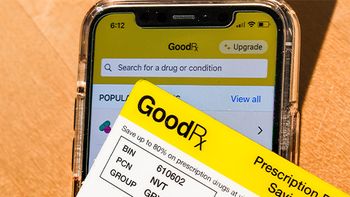
- Pharmaceutical Commerce - January/February 2017
Elapsed time from discovery to launch remains ‘stubbornly long,’ says QuintilesIMS study
Shorter elapsed time in recent years shows encouraging improvement
Drugs travel a long and arduous road between discovery of a “new active substance” and a launched product—this is a well known attribute of the industry. Now, a longitudinal study (of sorts) for how drugs progress from discovery to launch highlights some fascinating dynamics, even though the overall picture is one of a “stubbornly long” delay between the two events. The
The usual rap about the time to launch is that if FDA were more efficient, the approval would come sooner. While the QuintilesIMS study does not look at elapsed time from drug application filing to approval (it does find an average on-patent life of a launched drug to be 12 years, 10 months, and cites other studies that find a range of 5.1 to 14.5 years for the patent-to-NDA stage), its analysis reveals some other key factors:
- When the same company that discovered a drug carried it through to launch, the elapsed time from patient to launch was 36 months shorter; also, nearly three-quarters of launches were not carried out by the original patent holder
- When a drug demonstrates blockbuster status (annual sales >$1 billion) within the first five years after launch, the elapsed time of patent-to-launch was 27 months shorter, and from launch to LOE was 23 months longer
- Conversely, only 19 drugs have reached blockbuster status within five years of launch over the past 20 years. However, nine of those were launched in the past five years, pointing to some degree of better targeting by pharma companies (or, on the other hand, more aggressive pricing).
Other trends revealed in the analysis have been recognized generally, but QuintilesIMS can put numbers to them: oncology represented 28% of launches in the 2011-2015 period, versus 11% in the 1996-2000 period. Similarly, orphan drugs represent 42% of the 2011-2015 period, double that of 1996-2000.
And there’s one finding that has a distinct political implication in the rising debate over drug pricing, drug importation and the like: “The US market remains of vital importance to biopharmaceutical innovation, accounting for more than 61% of a new drug’s sales over its first five years following launch, and 68% for the cohort of launches in the 2011–15 period. Ex-US markets are generally proving more challenging for biopharmaceutical innovation from both a pricing and volume perspective.” Another way of demonstrating the connection between pharma innovation and US pricing policy.
Articles in this issue
almost 9 years ago
Hey, what’s this supply chain stuff?almost 9 years ago
Healthcare confronts opioid addictionalmost 9 years ago
FDA issues guidances on biosimilarity naming, interchangeabilityalmost 9 years ago
US Drug Pricing Debate: Finding some dearly needed real solutionsalmost 9 years ago
A conversation with Mark Sell, MD Logisticsalmost 9 years ago
Getting to prescribers via the diagnostics routealmost 9 years ago
Pharmaceutical Cargo Security Coalition (PCSC) sets expanded agendaalmost 9 years ago
Commercial IT moves to the cloudalmost 9 years ago
Consultant pharmacists and long-term care 101Newsletter
Stay ahead in the life sciences industry with Pharmaceutical Commerce, the latest news, trends, and strategies in drug distribution, commercialization, and market access.




